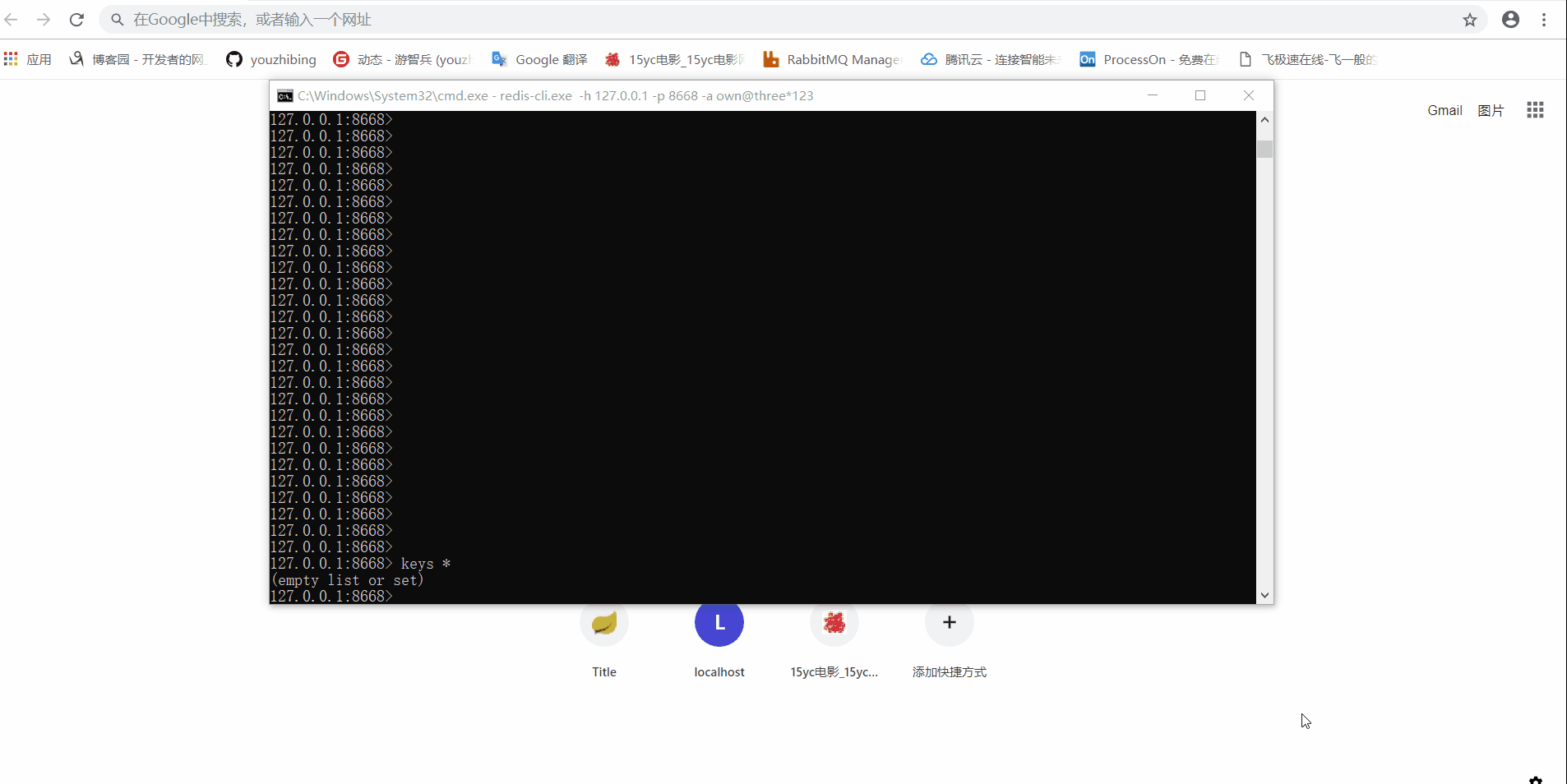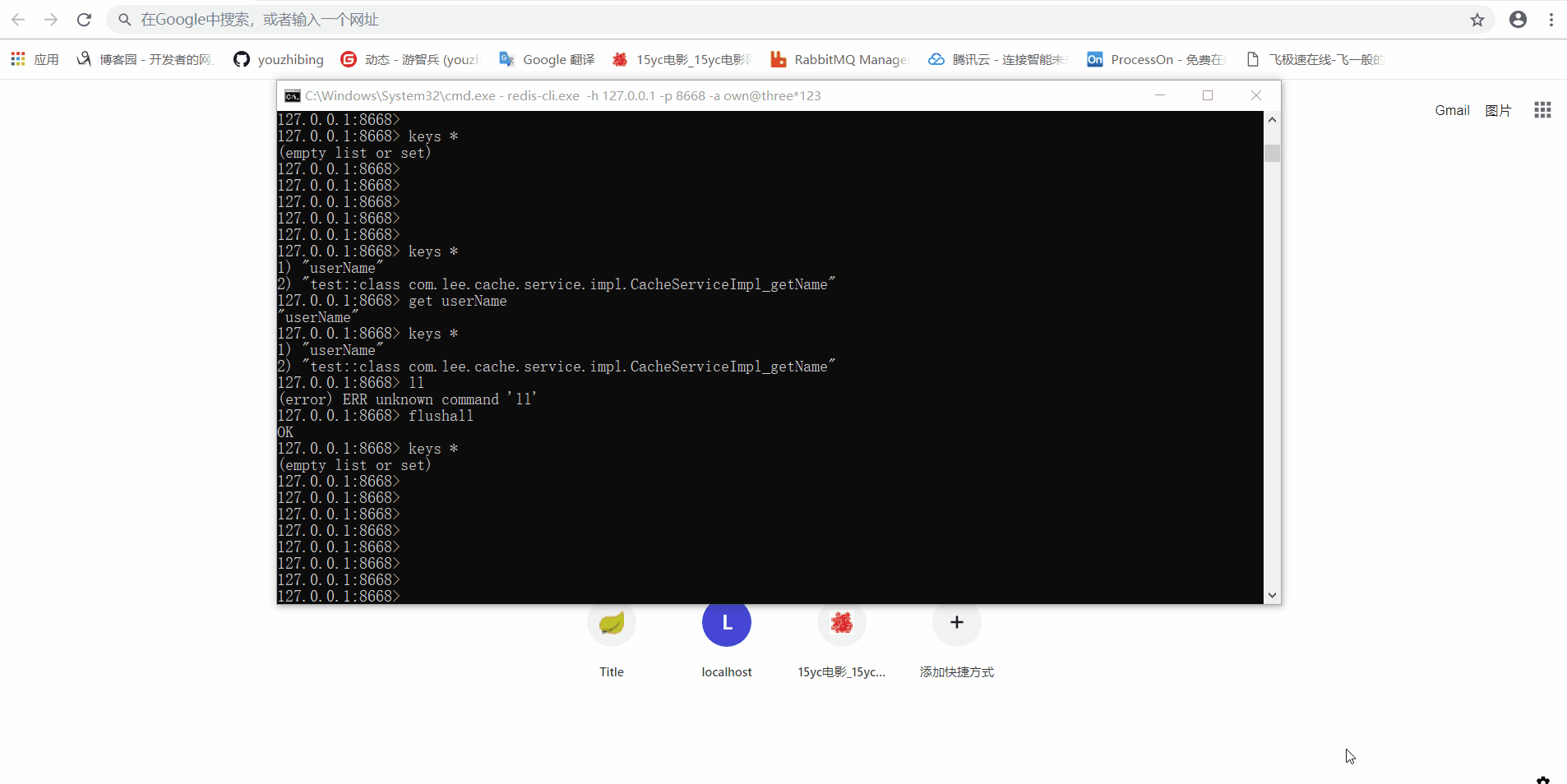前言 開心一刻 小白問小明:“你前面有一個5米深的坑,裡面沒有水,如果你跳進去後該怎樣出來了?”小明:“躺著出來唄,還能怎麼出來?”小白:“為什麼躺著出來?”小明:“5米深的坑,還沒有水,跳下去不死就很幸運了,殘是肯定會殘的,不躺著出來,那能怎麼出來?”小白:“假設沒死也沒殘呢?”小明:“你當我超人 ...
前言
開心一刻
小白問小明:“你前面有一個5米深的坑,裡面沒有水,如果你跳進去後該怎樣出來了?”小明:“躺著出來唄,還能怎麼出來?”小白:“為什麼躺著出來?”小明:“5米深的坑,還沒有水,跳下去不死就很幸運了,殘是肯定會殘的,不躺著出來,那能怎麼出來?”小白:“假設沒死也沒殘呢?”小明:“你當我超人了? 那也簡單,把腦子裡的水放出來就可以漂出來了。”小白:“你腦子裡有這麼多水嗎?”小明:“我腦子裡沒那麼多水我跳下去幹嘛?”
路漫漫其修遠兮,吾將上下而求索!
github:https://github.com/youzhibing
碼雲(gitee):https://gitee.com/youzhibing
springboot 1.x到2.x變動的內容還是挺多的,而2.x之間也存在細微的差別,本文不講這些差別(具體差別我也不知道,汗......),只講1.5.9與2.0.3的redis緩存配置的區別
springboot1.5.9緩存配置
工程實現
1.x系列配置應該都差不多,下麵我們看看1.5.9中,springboot集成redis的緩存實現
pom.xml

<?xml version="1.0" encoding="UTF-8"?> <project xmlns="http://maven.apache.org/POM/4.0.0" xmlns:xsi="http://www.w3.org/2001/XMLSchema-instance" xsi:schemaLocation="http://maven.apache.org/POM/4.0.0 http://maven.apache.org/xsd/maven-4.0.0.xsd"> <modelVersion>4.0.0</modelVersion> <groupId>com.lee</groupId> <artifactId>spring-boot159.cache</artifactId> <version>1.0-SNAPSHOT</version> <properties> <java.version>1.8</java.version> </properties> <parent> <groupId>org.springframework.boot</groupId> <artifactId>spring-boot-starter-parent</artifactId> <version>1.5.9.RELEASE</version> </parent> <dependencies> <dependency> <groupId>org.springframework.boot</groupId> <artifactId>spring-boot-starter-web</artifactId> </dependency> <dependency> <groupId>org.springframework.boot</groupId> <artifactId>spring-boot-starter-data-redis</artifactId> </dependency> </dependencies> </project>View Code
application.yml

server: port: 8888 spring: #redis配置 redis: database: 0 host: 127.0.0.1 port: 6379 password: # 連接超時時間(毫秒) timeout: 2000 pool: # 連接池最大連接數(使用負值表示沒有限制) max-active: 8 # 連接池最大阻塞等待時間(使用負值表示沒有限制) max-wait: -1 # 連接池中的最大空閑連接 max-idle: 8 # 連接池中的最小空閑連接 min-idle: 0 cache: type: redis cache: expire-time: 180View Code
RedisCacheConfig.java

package com.lee.cache.config; import com.fasterxml.jackson.annotation.JsonAutoDetect; import com.fasterxml.jackson.annotation.PropertyAccessor; import com.fasterxml.jackson.databind.ObjectMapper; import org.springframework.beans.factory.annotation.Value; import org.springframework.cache.CacheManager; import org.springframework.cache.annotation.CachingConfigurerSupport; import org.springframework.cache.annotation.EnableCaching; import org.springframework.cache.interceptor.KeyGenerator; import org.springframework.context.annotation.Bean; import org.springframework.context.annotation.Configuration; import org.springframework.data.redis.cache.RedisCacheManager; import org.springframework.data.redis.connection.RedisConnectionFactory; import org.springframework.data.redis.core.RedisTemplate; import org.springframework.data.redis.core.StringRedisTemplate; import org.springframework.data.redis.serializer.Jackson2JsonRedisSerializer; /** * 必須繼承CachingConfigurerSupport,不然此類中生成的Bean不會生效(沒有替換掉預設生成的,只是一個普通的bean) * springboot預設生成的緩存管理器和redisTemplate支持的類型很有限,根本不滿足我們的需求,會拋出如下異常: * org.springframework.cache.interceptor.SimpleKey cannot be cast to java.lang.String */ @Configuration @EnableCaching public class RedisCacheConfig extends CachingConfigurerSupport { @Value("${cache.expire-time:180}") private int expireTime; // 配置key生成器,作用於緩存管理器管理的所有緩存 // 如果緩存註解(@Cacheable、@CacheEvict等)中指定key屬性,那麼會覆蓋此key生成器 @Bean public KeyGenerator keyGenerator() { return (target, method, params) -> { StringBuilder sb = new StringBuilder(); sb.append(target.getClass().getName()); sb.append(method.getName()); for (Object obj : params) { sb.append(obj.toString()); } return sb.toString(); }; } // 緩存管理器管理的緩存都需要有對應的緩存空間,否則拋異常:No cache could be resolved for 'Builder... @Bean public CacheManager cacheManager(RedisTemplate redisTemplate) { RedisCacheManager rcm = new RedisCacheManager(redisTemplate); rcm.setDefaultExpiration(expireTime); //設置緩存管理器管理的緩存的過期時間, 單位:秒 return rcm; } @Bean public RedisTemplate<String, String> redisTemplate(RedisConnectionFactory factory) { StringRedisTemplate template = new StringRedisTemplate(factory); Jackson2JsonRedisSerializer jackson2JsonRedisSerializer = new Jackson2JsonRedisSerializer(Object.class); ObjectMapper om = new ObjectMapper(); om.setVisibility(PropertyAccessor.ALL, JsonAutoDetect.Visibility.ANY); om.enableDefaultTyping(ObjectMapper.DefaultTyping.NON_FINAL); jackson2JsonRedisSerializer.setObjectMapper(om); template.setValueSerializer(jackson2JsonRedisSerializer); template.afterPropertiesSet(); return template; } }View Code
CacheServiceImpl.java

package com.lee.cache.service.impl; import com.lee.cache.model.User; import com.lee.cache.service.ICacheService; import org.springframework.beans.factory.annotation.Autowired; import org.springframework.cache.annotation.Cacheable; import org.springframework.data.redis.core.RedisTemplate; import org.springframework.stereotype.Service; import org.springframework.util.StringUtils; import java.util.ArrayList; import java.util.List; /** * 若未配置@CacheConfig(cacheNames = "hello"), 則@Cacheable一定要配置value,相當於指定緩存空間 * 否則會拋異常:No cache could be resolved for 'Builder... * * 若@CacheConfig(cacheNames = "hello") 與 @Cacheable(value = "123")都配置了, 則@Cacheable(value = "123")生效 * * 當然@CacheConfig還有一些其他的配置項,Cacheable也有一些其他的配置項 */ @Service public class CacheServiceImpl implements ICacheService { @Autowired private RedisTemplate<String, String> redisTemplate; @Override @Cacheable(value = "test") // key用的自定義的KeyGenerator public String getName() { System.out.println("getName, no cache now..."); return "brucelee"; } @Override @Cacheable(value = "user", key = "methodName + '_' + #p0", unless = "#result.size() <= 0") // key會覆蓋掉KeyGenerator public List<User> listUser(int pageNum, int pageSize) { System.out.println("listUser no cache now..."); List<User> users = new ArrayList<>(); users.add(new User("zhengsan", 22)); users.add(new User("lisi", 20)); System.out.println("==========="); return users; } /** * 緩存不是緩存管理器管理,那麼不受緩存管理器的約束 * 緩存管理器中的配置不適用與此 * 這裡相當於我們平時直接通過redis-cli操作redis * @return */ @Override public String getUserName() { String userName = redisTemplate.opsForValue().get("userName"); if (!StringUtils.isEmpty(userName)) { return userName; } System.out.println("getUserName, no cache now..."); redisTemplate.opsForValue().set("userName", "userName"); return "userName"; } }View Code
上述只講了幾個主要的文件,更多詳情請點springboot159-cache
redis 怎樣保存cache
大家一定要把工程仔細看一遍,不然下麵出現的一些名稱會讓我們感覺不知從哪來的;

工程中的緩存分兩種:緩存管理器管理的緩存(也就是一些列註解實現的緩存)、redisTemplate操作的緩存
緩存管理器管理的緩存
會在redis中增加2條數據,一個是類型為 zset 的 緩存名~keys , 裡面存放了該緩存所有的key, 另一個是對應的key,值為序列化後的json;緩存名~keys可以理解成緩存空間,與我們平時所說的具體的緩存是不一樣的。另外對緩存管理器的一些設置(全局過期時間等)都會反映到緩存管理器管理的所有緩存上;上圖中的http://localhost:8888/getName和http://localhost:8888/listUser?pageNum=1&pageSize=3對應的是緩存管理器管理的緩存。
redisTemplate操作的緩存
會在redis中增加1條記錄,key - value鍵值對,與我們通過redis-cli操作緩存一樣;上圖中的http://localhost:8888/getUserName對應的是redisTemplate操作的緩存。
spring2.0.3緩存配置
工程實現
pom.xml

<?xml version="1.0" encoding="UTF-8"?> <project xmlns="http://maven.apache.org/POM/4.0.0" xmlns:xsi="http://www.w3.org/2001/XMLSchema-instance" xsi:schemaLocation="http://maven.apache.org/POM/4.0.0 http://maven.apache.org/xsd/maven-4.0.0.xsd"> <modelVersion>4.0.0</modelVersion> <groupId>com.lee</groupId> <artifactId>spring-boot-cache</artifactId> <version>1.0-SNAPSHOT</version> <parent> <groupId>org.springframework.boot</groupId> <artifactId>spring-boot-starter-parent</artifactId> <version>2.0.3.RELEASE</version> </parent> <dependencies> <dependency> <groupId>org.springframework.boot</groupId> <artifactId>spring-boot-starter-web</artifactId> </dependency> <dependency> <groupId>org.springframework.boot</groupId> <artifactId>spring-boot-starter-data-redis</artifactId> </dependency> <dependency> <groupId>org.apache.commons</groupId> <artifactId>commons-pool2</artifactId> </dependency> <dependency> <groupId>org.apache.commons</groupId> <artifactId>commons-lang3</artifactId> </dependency> </dependencies> </project>View Code
application.yml

server: port: 8889 spring: #redis配置 redis: database: 0 host: 127.0.0.1 port: 6379 password: lettuce: pool: # 接池最大連接數(使用負值表示沒有限制) max-active: 8 # 連接池最大阻塞等待時間(使用負值表示沒有限制) max-wait: -1ms # 連接池中的最小空閑連接 max-idle: 8 # 連接池中的最大空閑連接 min-idle: 0 # 連接超時時間 timeout: 2000ms cache: type: redis cache: test: expire-time: 180 name: test default: expire-time: 200View Code
緩存定製:RedisCacheManagerConfig.java

package com.lee.cache.config; import org.springframework.beans.factory.annotation.Value; import org.springframework.cache.CacheManager; import org.springframework.context.annotation.Bean; import org.springframework.context.annotation.Configuration; import org.springframework.data.redis.cache.RedisCacheConfiguration; import org.springframework.data.redis.cache.RedisCacheManager; import org.springframework.data.redis.connection.RedisConnectionFactory; import org.springframework.data.redis.serializer.GenericJackson2JsonRedisSerializer; import org.springframework.data.redis.serializer.RedisSerializationContext; import org.springframework.data.redis.serializer.StringRedisSerializer; import java.time.Duration; import java.util.HashMap; import java.util.HashSet; import java.util.Map; import java.util.Set; /** * 進行緩存管理的定製 * 可以不配置,採用springboot預設的也行 */ @Configuration public class RedisCacheManagerConfig { @Value("${cache.default.expire-time:1800}") private int defaultExpireTime; @Value("${cache.test.expire-time:180}") private int testExpireTime; @Value("${cache.test.name:test}") private String testCacheName; //緩存管理器 @Bean public CacheManager cacheManager(RedisConnectionFactory lettuceConnectionFactory) { RedisCacheConfiguration defaultCacheConfig = RedisCacheConfiguration.defaultCacheConfig(); // 設置緩存管理器管理的緩存的預設過期時間 defaultCacheConfig = defaultCacheConfig.entryTtl(Duration.ofSeconds(defaultExpireTime)) // 設置 key為string序列化 .serializeKeysWith(RedisSerializationContext.SerializationPair.fromSerializer(new StringRedisSerializer())) // 設置value為json序列化 .serializeValuesWith(RedisSerializationContext.SerializationPair.fromSerializer(new GenericJackson2JsonRedisSerializer())) // 不緩存空值 .disableCachingNullValues(); Set<String> cacheNames = new HashSet<>(); cacheNames.add(testCacheName); // 對每個緩存空間應用不同的配置 Map<String, RedisCacheConfiguration> configMap = new HashMap<>(); configMap.put(testCacheName, defaultCacheConfig.entryTtl(Duration.ofSeconds(testExpireTime))); RedisCacheManager cacheManager = RedisCacheManager.builder(lettuceConnectionFactory) .cacheDefaults(defaultCacheConfig) .initialCacheNames(cacheNames) .withInitialCacheConfigurations(configMap) .build(); return cacheManager; } }View Code
此類可不用配置,就用spring-boot自動配置的緩存管理器也行,只是在緩存的可閱讀性上會差一些。有興趣的朋友可以刪除此類試試。
CacheServiceImpl.java

package com.lee.cache.service.impl; import com.lee.cache.model.User; import com.lee.cache.service.ICacheService; import org.apache.commons.lang3.StringUtils; import org.springframework.beans.factory.annotation.Autowired; import org.springframework.cache.annotation.CacheConfig; import org.springframework.cache.annotation.Cacheable; import org.springframework.data.redis.core.RedisTemplate; import org.springframework.stereotype.Service; import java.util.ArrayList; import java.util.List; /** * 若未配置@CacheConfig(cacheNames = "hello"), 則@Cacheable一定要配置value * 若@CacheConfig(cacheNames = "hello") 與 @Cacheable(value = "123")都配置了, 則@Cacheable(value = "123") 生效 * * 當然@CacheConfig還有一些其他的配置項,Cacheable也有一些其他的配置項 */ @Service public class CacheServiceImpl implements ICacheService { @Autowired private RedisTemplate<String, String> redisTemplate; @Override @Cacheable(value = "test", key = "targetClass + '_' + methodName") public String getName() { System.out.println("getName, no cache now..."); return "brucelee"; } @Override @Cacheable(value = "user", key = "targetClass + ':' + methodName + '_' + #p0", unless = "#result.size() <= 0") public List<User> listUser(int pageNum, int pageSize) { System.out.println("listUser no cache now..."); List<User> users = new ArrayList<>(); users.add(new User("zhengsan", 22)); users.add(new User("lisi", 20)); return users; } /** * 緩存不是緩存管理器管理,那麼不受緩存管理器的約束 * 緩存管理器中的配置不適用與此 * 這裡相當於我們平時直接通過redis-cli操作redis * @return */ @Override public String getUserName() { String userName = redisTemplate.opsForValue().get("userName"); if (StringUtils.isNotEmpty(userName)) { return userName; } System.out.println("getUserName, no cache now..."); redisTemplate.opsForValue().set("userName", "userName"); return "userName"; } }View Code
更多詳情請點spring-boot-cache
redis 怎樣保存cache
我們來看圖說話,看看緩存在redis中是如何保存的

工程中的緩存分兩種:緩存管理器管理的緩存(也就是一些列註解實現的緩存)、redisTemplate操作的緩存
緩存管理器管理的緩存
會在redis中增加1條數據,key是以緩存空間開頭的字元串(緩存空間名::緩存key),值為序列化後的json;上圖中的http://localhost:8889/getName和http://localhost:8889/listUser?pageNum=1&pageSize=3對應的是緩存管理器管理的緩存。
redisTemplate操作的緩存
會在redis中增加1條記錄,key - value鍵值對,與我們通過redis-cli操作緩存一樣;上圖中的http://localhost:8889/getUserName對應的是redisTemplate操作的緩存。
總結
1、有時候我們引入spring-boot-starter-cache這個starter只是為了快速添加緩存依賴,目的是引入spring-context-support;如果我們的應用中中已經有了spring-context-support,那麼我們無需再引入spring-boot-starter-cache,例如我們的應用中依賴了spring-boot-starter-web,而spring-boot-starter-web中又有spring-context-support依賴,所以我們無需再引入spring-boot-starter-cache。
2、Supported Cache Providers,講了支持的緩存類型以及預設情況下的緩存載入方式,可以通讀下。
3、只要我們引入了redis依賴,並將redis的連接信息配置正確,springboot(2.0.3)根據我們的配置會給我們生成預設的緩存管理器和redisTemplate;我們也可以自定義我們自己的緩存管理器來替換掉預設的,只要我們自定義了緩存管理器和redisTemplate,那麼springboot的預設生成的會替換成我們自定義的。
4、緩存管理器對緩存的操作也是通過redisTemplate實現的,只是進行了統一的管理,並且能夠減少我麽的代碼量,我們可以將更多的精力放到業務處理上。
5、redis-cli -h 127.0.0.1 -p 6379 -a 123456與redis-cli -a 123456兩種方式訪問到的數據完全不一致,好像操作不同的庫一樣! 這個需要註意,有空我回頭看看這兩者到底有啥區別,有知道的朋友可以留個言。
最後緬懷一下:金庸走了,再無江湖;IG捧杯了,再無LOL!感謝IG成就了我的完美謝幕,讓我的青春少了一份遺憾,謝謝!
參考
spring boot(三):Spring Boot中Redis的使用



